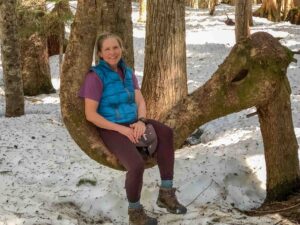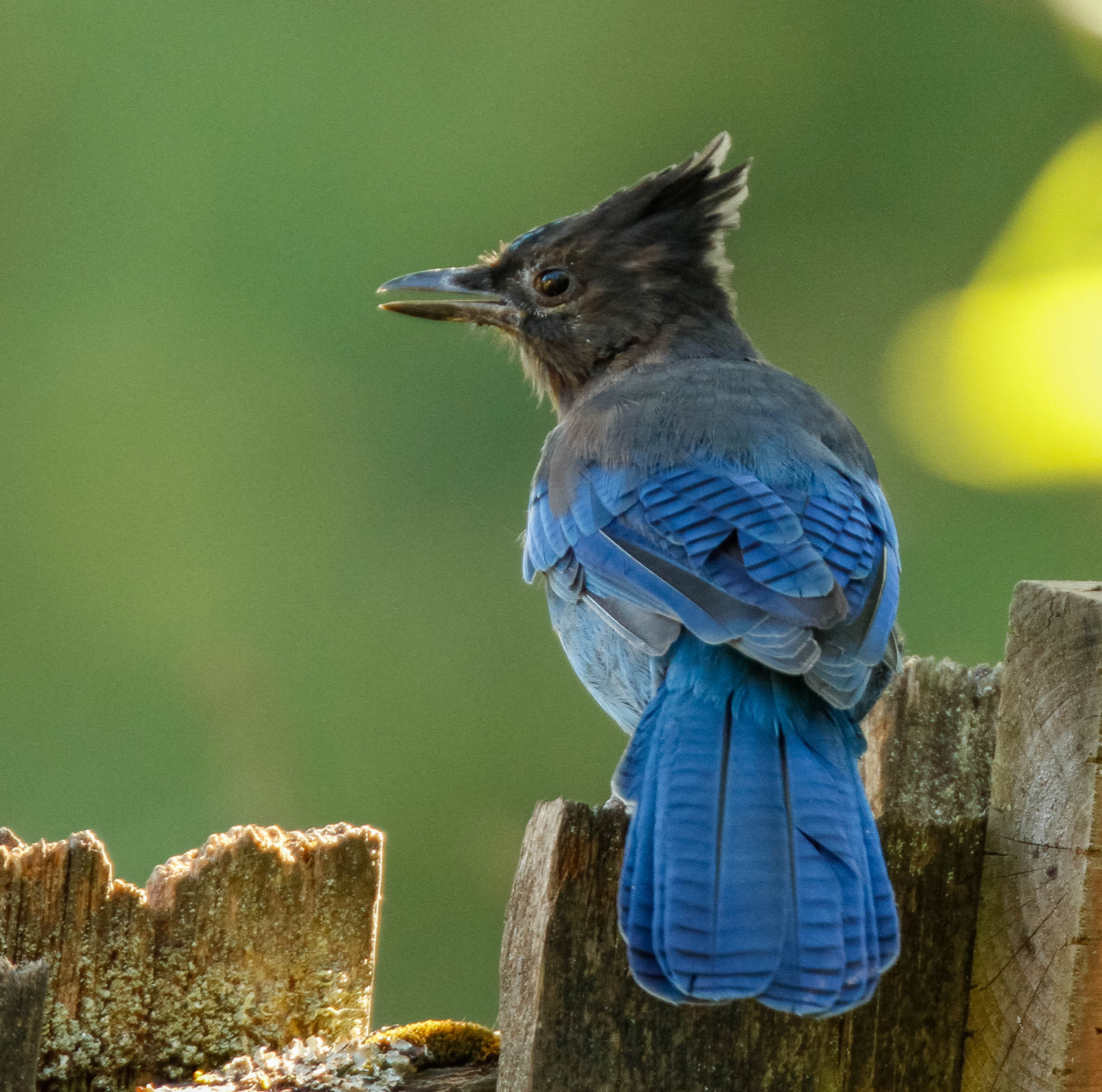
What Steller’s Jays Teach Me about Caring
Wednesday evening, the drama outside my home office window had nothing to do with the many fabulous hiking experiences I’ve been enjoying all spring. It was all about birds, in particular, a family of Steller’s jays.
Steller’s Jays Spring Nesting
A pair of Steller’s jays has been nesting near the north side of our house, raising chicks in a tangle of fir, bamboo, and cedar. I’ve been quietly watching the process unfold through the glass—first the gentle feeding, then the cautious flights. Yesterday morning, I heard a cacophony unlike most Steller’s jays’ calls, as I was expecting a client to arrive. I looked out the window…

And spotted a black and white cat sitting below two adult jays perched on a fence. Putting two and two together, I realized the raucous adults must be trying to protect their chicks. I dashed out the front door, my sudden appearance startling the cat so much that he darted away. Our yard became peaceful again. Crisis averted. For now.
Steller’s Jays’ Raucous Uproar
Yesterday evening, as I studied recent bird migration numbers from Birdcast, it was the crows’ turn.
As I worked at my desk, I heard a god-awful racket and rushed to the upper deck on the south side. The jays were in full defense mode, dive-bombing a crow with loud, raspy cries. I stood silently watching the scene unfold, my arms clasped under my chin in prayer, rooting for the baby jays.
While a pair of crows went about their business of foraging at one of the neighbor’s feeders, I watched the parent Steller’s jays gently coo-caw to what appeared to be a young fledgling, well-camouflaged in the high branches of a towering bush we planted nearly 15 years ago.
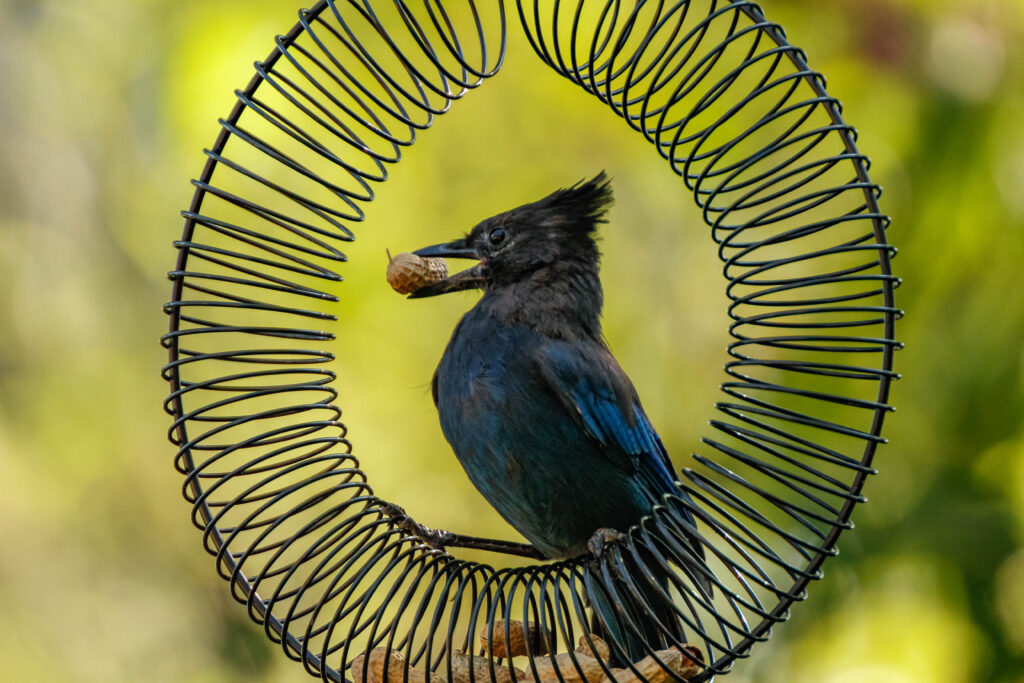
Suddenly another crow swooped down on something on my neighbor’s gravel path. Both adult Steller’s jays took to the air, sending out desperate, obnoxious caws as they rushed to protect what I assume was a second fledgling.
I burst into tears, my stomach dropping to my feet, as I imagined the poor fledgling getting plucked apart by the crow’s mighty beak.
My Emotional Reaction
Panicked, I thought about racing over to the neighbor’s front door to – to say what, exactly? That I thought there may be a few bully crows attacking some vulnerable fledgling Steller’s jays in their backyard?
In all the chaos, I found myself crying—sobbing—for two tiny birds I don’t even know. Even more than I cried this weekend over the death of a dear writing friend’s precious young horse, who I also had never met before, but who I know meant the world to her.
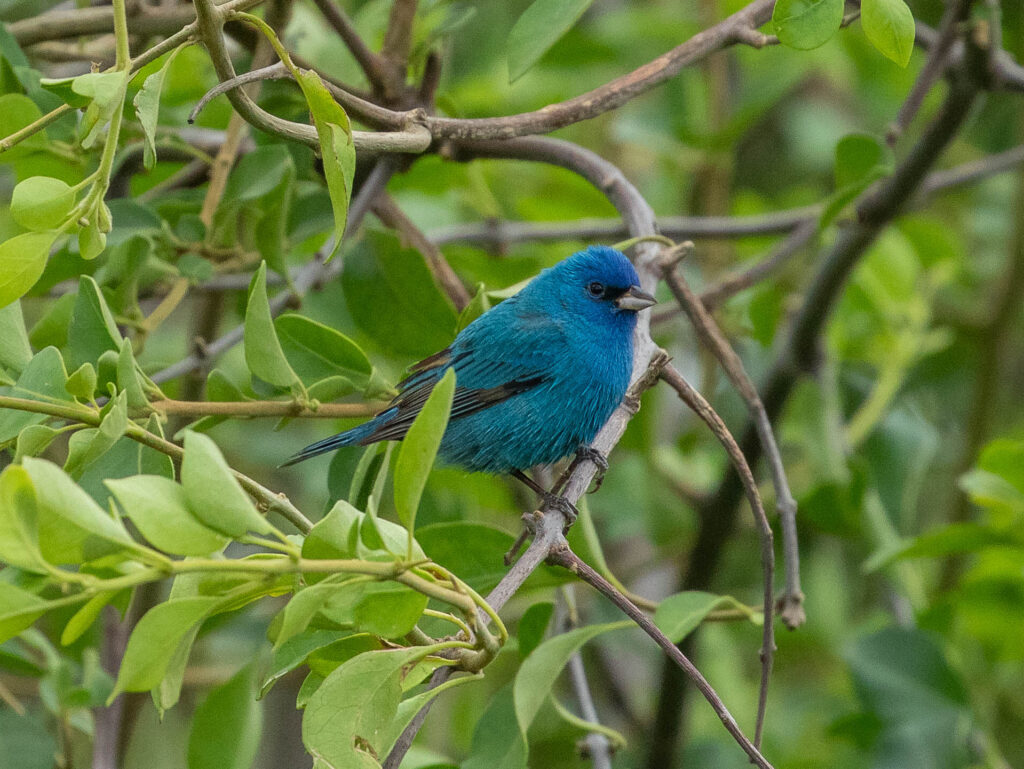
At first, I thought: This is totally ridiculous. Get a grip. You don’t even know if they got the chicks. And they’re just BIRDS.
But the more I sat with it, the more I realized: this isn’t just about birds.
Why It Matters To Me
True, May is the month I lost my dog over a dozen years ago. But even that wasn’t truly it. This was about the heartbreak of watching something so tiny and completely vulnerable step into the big, brutal, fiercely competitive world. The rawness of caring when you have zero control over the outcome. The tension of rooting for life in a world where survival is never guaranteed. Drama at its finest, no technology or wires required.
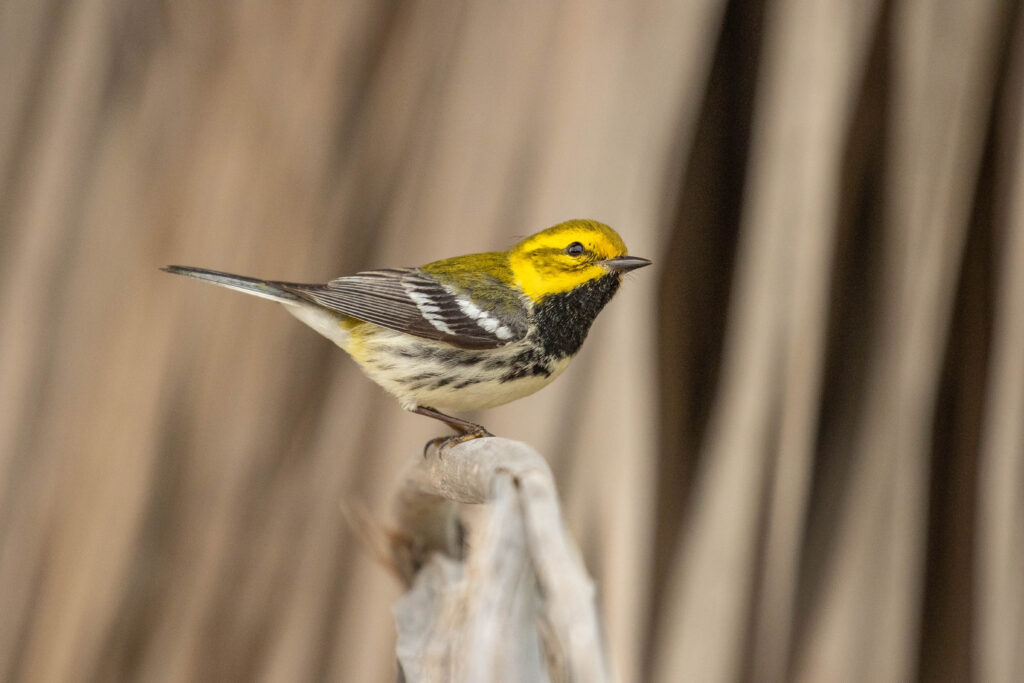
We’ve spent years creating a backyard habitat for wildlife—planting native species, adding a pond, setting feeders, minimizing light at night. And we’ve traveled to North Carolina, Arizona, and Texas to expand our horizons and see birds in different environments.
I like to think our efforts at education — both ourselves and those I hike and bird with — and conservation have made a small difference. But there are no promises in nature. No safety nets. Just the wild interplay of survival and struggle.
And sometimes, grief catches you off guard. Years ago I bawled as I watched a band-tailed pigeon’s life seep away after it flew into the glass of our sliding door. I’ve seen sparrows and chickadees hunker down, ill or hurt, only to discover feathers later. Prey to mammals or other larger birds.
Life Happens. How Do We React?
I know crows are just doing what crows do. The cat, too. It’s all part of a system that’s far older and more complex than any of us. But knowing that doesn’t make it easier to witness. And maybe that’s the point.
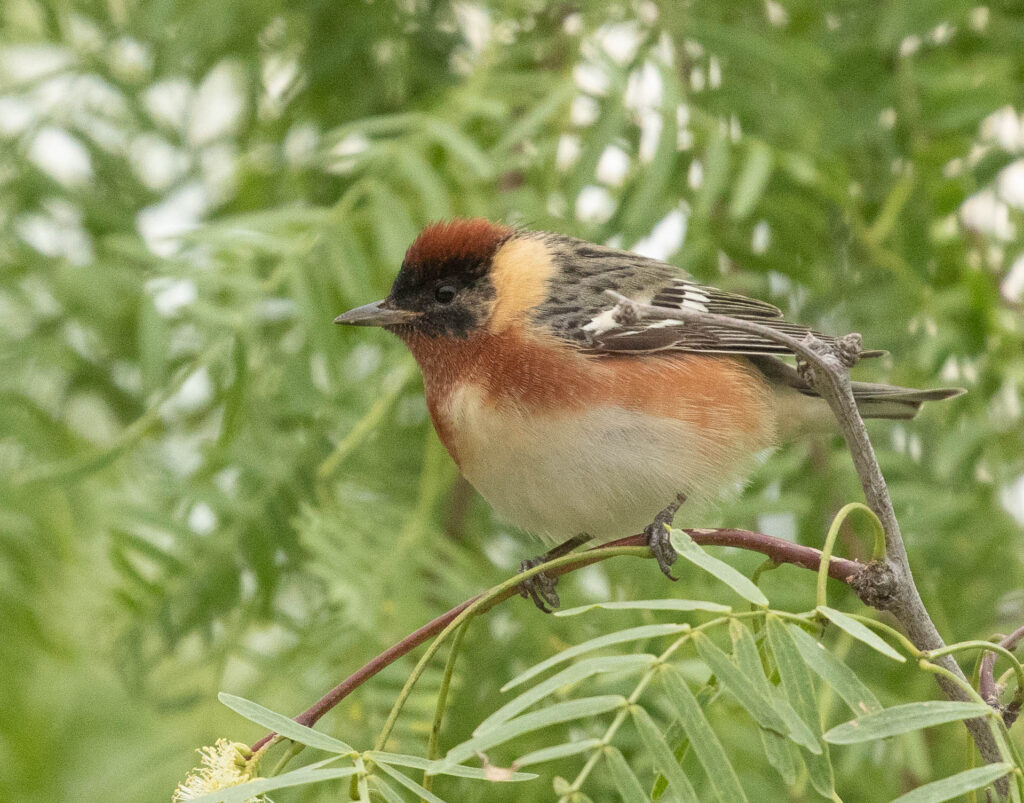
Maybe this is what caring looks like: crying over fledglings, keeping the feeders full, offering water in the dry season, turning off lights during peak migration. Small acts. Quiet choices. Tenderness, even when the world feels impossibly hard.
Maybe the ache is a reminder: I’m still connected. Still awake. Still willing to feel deeply. This matters to me.
And in a world that asks us to toughen up, to scroll past, to ignore, fight, or look away—maybe that willingness is a unique source of strength.


